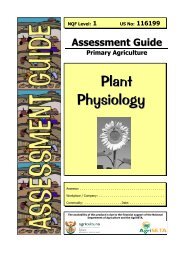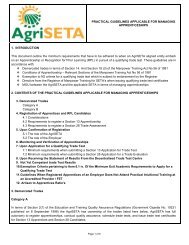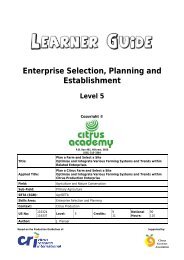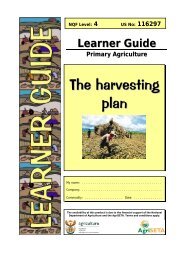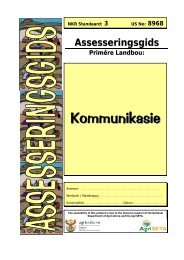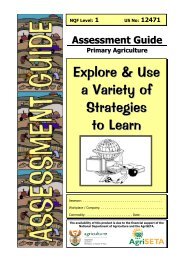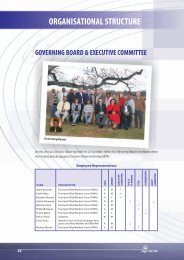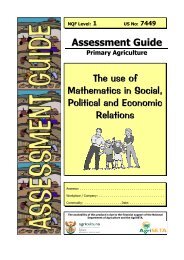Evaluate Basic External Animal Anatomy and Morphology - AgriSETA
Evaluate Basic External Animal Anatomy and Morphology - AgriSETA
Evaluate Basic External Animal Anatomy and Morphology - AgriSETA
- No tags were found...
Create successful ePaper yourself
Turn your PDF publications into a flip-book with our unique Google optimized e-Paper software.
<strong>Evaluate</strong> <strong>Basic</strong> <strong>External</strong> <strong>Animal</strong> <strong>Anatomy</strong> <strong>and</strong> <strong>Morphology</strong>Primary Agriculture NQF Level 1 Unit St<strong>and</strong>ard No: 1161736The appropriate codes of practice <strong>and</strong> procedures relating to the h<strong>and</strong>ling <strong>and</strong>evaluation of animals <strong>and</strong> the implications of contraventions.The effects of the various gross abnormalities <strong>and</strong> their timeouts perception onthe well being of the animal.Classification of animals based on their anatomy <strong>and</strong> morphology.Interpretation of information.Use of Science <strong>and</strong> Technology.Self-development skills.You must be able to solve some problems independently, while other activities mustbe carried out as part of a team. You must be able to identify <strong>and</strong> interpret theinformation gathered.To achieve this Unit St<strong>and</strong>ard you will participate in a number of learning activitiesthat include formal lectures <strong>and</strong> presentations, outings, classroom group activities<strong>and</strong> assignments.The classroom feedback sessions on these assignments will form part of theformative assessment. At the end of this unit a written questionnaire that testsembedded knowledge <strong>and</strong> will form part of the summative assessment must becompleted <strong>and</strong> h<strong>and</strong>ed to the facilitator. There will also be a summative theoretictest.IntroductionAll living things on our planet earth live in a very small space on the surface of theplanet. Living creatures are found on l<strong>and</strong>, in the air, as well as in the water coveringthe surface of the earth.To make it easier to study the different living creatures on earth, scientists dividedthem into groups. The five groups in which they are divided are called kingdoms.They include:Monera (the prokaryotic bacteria <strong>and</strong> blue-green algae – which do not havenuclear membranes or subcellular organelles).Protista (unicellular algae <strong>and</strong> protozoans – single celled organisms).Plantae (multicellular plants).Fungi (non-photosynthetic plantlike organism – e.g. Mushrooms).<strong>Animal</strong>ia (multicellular animals).Version: 01 Version Date: July 2006



